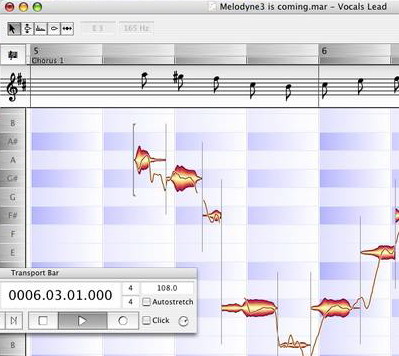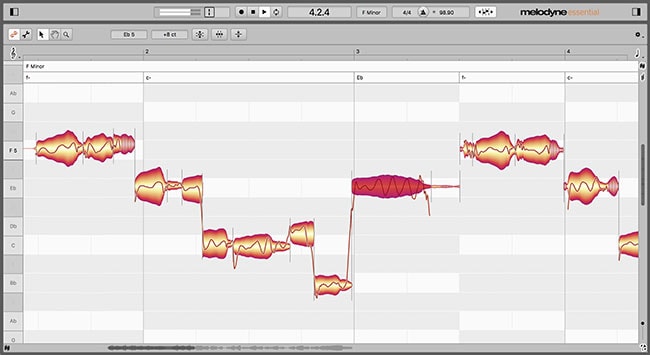


You could also change it yourself to a different mode, after it has loaded up the polyphonic audio, so it will use a Melodic or Percussive mode. With the Editor version, you get the huge advantage of DNA.ĭNA (Direct Note Access) lets Melodyne Editor display and edit polyphonic audio. In Melodyne Essential, the basic version available from Celemony, you can edit monophonic or rhythmic/unpitched types of audio. After it’s loaded in, then there is no delay, and you can move/edit blobs right away. That’s why it can’t be used like some other real-time plugins, such as reverb, chorus, or delay. When it is first loading in the audio, Melodyne needs some time to analyze it. When you get to where you want it to end, stop playback in your DAW, and then edit away in Melodyne Editor. If your DAW supports ARA, you just click “Transfer”, select a section of audio, and start playback. Pitch, rhythm, tempo and more can be passed between the two easily, as if Melodyne Editor was actually another part of your DAW that’s built-in.

Some quick notes about ARA: it is an extension that adds on to the capabilities of the plugin and your DAW (if your DAW supports it) and lets them communicate in a new way. If you have loaded it in as a plugin, you use the “Transfer” button to be able to use it on the audio. There are a couple of ways to start using Melodyne: If you use the standalone version, you would load up an audio file and go ahead with editing. You have nearly unlimited control over the content you’ve brought into Melodyne Editor. In its most basic form, you can drag each little section (Celemony calls these “blobs”) up/down/left right, and it will change the pitch and/or timing. The waveform is broken into separate pitches, instead of one whole waveform, and you can see what the note values are along the left side. With Melodyne Editor, when you load in the waveform, it is displayed on a grid. Well, it’s a lot better than that these days. Digital technology is great isn’t it? I could do that on my Amiga 2000 back in the early ’90s. You can then cut the waveform into different parts, and move those around, delete them, etc. To manipulate audio data, usually you’d import a waveform into some type of audio editor. I’ll explain a bit more ARA and DNA later on. The DNA polyphonic functionality is only available in this Editor version. Since its first release, it has gained many additional features over the years.Ĭelemony’s top product, called Melodyne Editor, uses both DNA (Direct Note Access) and ARA (Audio Random Access). It has won numerous awards, including two SOS awards, and a Technical Grammy. Melodyne first came on the scene about twelve years ago, and since then has been used by many of major musicians and producers around the world. Can Celemony make that claim with Melodyne Editor? Find out more in this review.Ĭelemony are the makers of Melodyne Essential, Assistant, Studio, and Editor. Every now and then you find a company with a product that leaves all competition in the dust.


 0 kommentar(er)
0 kommentar(er)
